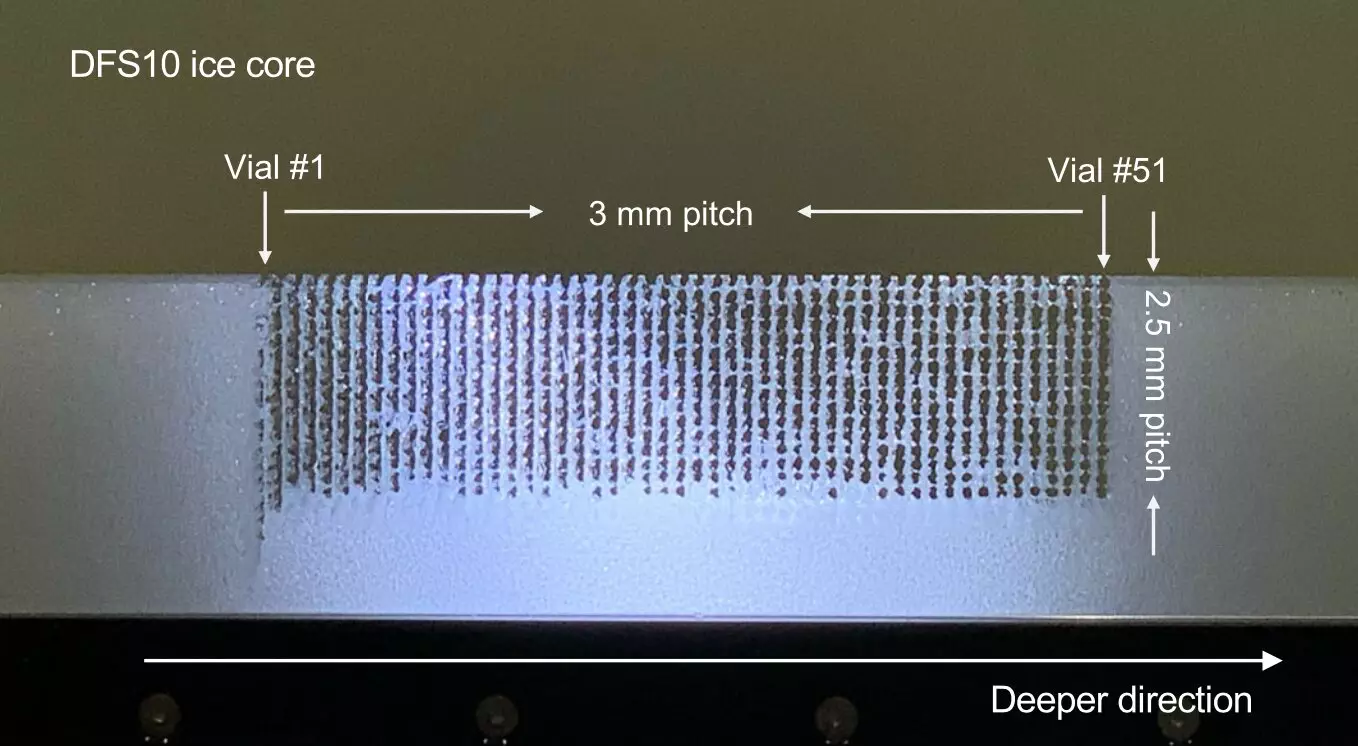Ice cores extracted from glaciers provide valuable information about past climate changes. By analyzing the composition of these ice cores, scientists can reconstruct temperature profiles and understand climate variations over long periods of time. However, current methods have limitations in their depth-resolution and ability to preserve critical isotopes. In a breakthrough study, researchers from the Astro-Glaciology Laboratory at the RIKEN Nishina Center in Japan have developed a new laser-based sampling system that overcomes these limitations.
Currently, there are two standard methods for sampling ice cores. One method has a depth-precision of about 1 cm, causing data loss for years with less than 1 cm accumulation. This method also fails to capture any one-time events that significantly altered climate. The other method has good depth-precision but destroys the part of the sample necessary for analyzing water content, which is crucial for inferring past temperatures.
The new laser melting sampler (LMS) developed by the researchers at RIKEN Nishina Center offers a 3-mm depth-resolution, three times smaller than the current available methods. This high depth-precision allows the detection of temperature variations that occurred over much smaller periods of time. With this innovation, it becomes possible to reconstruct continuous annual temperature changes that happened thousands to hundreds of thousands of years ago, providing a deeper understanding of climate change.
The Functioning of the LMS System
The LMS system utilizes a laser beam delivered through an optical fiber with a special silver nozzle. The researchers optimized three critical aspects of the process: the power and speed of the laser, the insertion speed of the nozzle, and the rate of vacuuming the liquid sample. This optimization ensures efficient and accurate melting of the ice, preventing the destabilization of critical isotopes.
To test the efficacy of the LMS system, the researchers sampled a 15-cm segment of a 50-cm Dome-Fuji shallow ice core from East Antarctica. Using the laser melting method, they successfully took 51 discrete samples at regular 3-mm intervals along the ice core segment. The stable oxygen and hydrogen isotopes in the meltwater matched well with those obtained through the manual segmentation method, establishing the accuracy of the laser-melting process. This experiment confirms the potential of the LMS system to provide precise and reliable temperature measurements.
Implications for Climate Change Research
The development of the LMS system opens up new opportunities for studying past climate changes. By reconstructing continuous temperature profiles, scientists can gain insights into long-term climate trends and better understand the drivers of climate change. This innovative approach allows for the detection of temperature variations over shorter periods of time, which could reveal subtle patterns and help validate climate models.
The laser-based sampling system developed by the researchers at RIKEN Nishina Center represents a significant advancement in the study of ice core composition. The high depth-resolution of the LMS system enables the reconstruction of continuous temperature profiles, providing a more comprehensive understanding of past climate changes. This innovative method has the potential to contribute greatly to climate change research, aiding scientists in developing effective strategies for mitigating the impact of global warming.


Leave a Reply